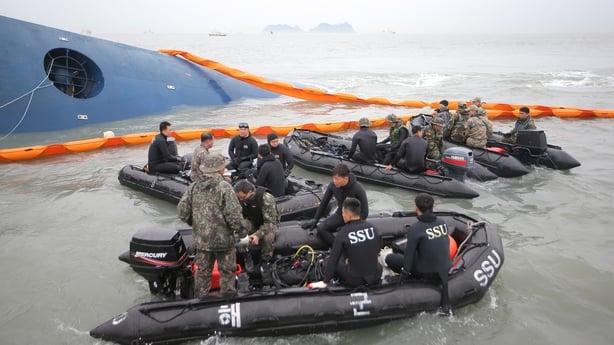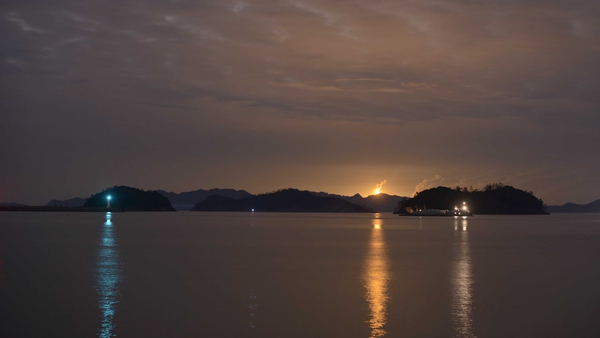Rescuers are struggling with strong waves and murky waters on as they search for hundreds of people, most of them teenagers from the same school, still missing after a South Korean ferry capsized on Wednesday.
Coastguard, navy and private divers scoured the site of theaccident, about 20km off the country's southwesterncoast.
Earlier, rescue teams hammered on the hull of the upturned, mostly submerged vessel, hoping for a response from anyone trapped inside, but they heard nothing, local media reported.
The vessel, carrying 475 passengers and crew, capsized during a journey from the port of Incheon to the holiday island of Jeju.
Coastguards recovered five more bodies late on Thursday,raising the death toll to 14 people.
Another 179 passengers have been rescued, leaving 282 unaccounted for and possibly trapped in the vessel.
One parent, Park Yung-suk, told Reuters at the port of Jindo, where rescue efforts are centred, that she had seen the body of her teenage daughter's teacher brought ashore.
"If I could teach myself to dive, I would jump in the water and try to find my daughter," she said. Her daughter was one of 340 children and teachers from the Danwon High School in Ansan, a Seoul suburb, on board the vessel.
The captain of the ship, Lee Joon-seok, 69, faces a criminal investigation, coastguard officials said, amid unconfirmed reports that he was one of the first to jump to safety from the stricken vessel.
One official said authorities were investigating whether the captain had indeed abandoned the vessel early and one of the charges he faced was violating a law that governs the conduct of shipping crew.
Many survivors told local media that Lee was one of the first to be rescued, although none actually saw him leave the ship. The coastguard and the ferry operator declined comment.
Although the water at the site of the accident is relatively shallow at under 50 metres, it is still dangerous for the 150 or so divers working flat out, experts said.
Time was running out to find any survivors trapped inside, they said.
"The chances of finding people in there (alive) are not zero," said David Jardine-Smith, secretary of the International Maritime Rescue Federation, adding, however, that conditions were extremely difficult.
"There is a lot of water current and silt in the water which means visibility is very poor and the divers are basically feeling their way around."
US President Barack Obama, who is scheduled to visit South Korea next week, expressed condolences to the victims' families and said US military personnel were helping with the search and rescue operation.
The Korean government said it was not giving up on the possibility of finding survivors, while the coastguard also turned its attention to what may have caused the disaster in calm seas.
"Today, we began looking into the cause of the submersion and sinking ... focusing on any questions about crew negligence, problems with cargo holding and structural defects of the vessel," senior coast guard official Kim Soo-hyun said.
There has been no official explanation for the sinking, although officials denied reports the ship, built in Japan 20years ago, was sharply off its authorised route.

Although the wider area has rock hazards and shallow waters, they were not in the immediate vicinity of its usual path.
The ferry was found to have three safety deficiencies in2012, including one related to navigation, but passed subsequent safety checks in 2013 and 2014, according to international and Korean shipping records.
The ferry's capacity was increased to more than 900 people from 800 when it was imported from Japan in late 2012, shipping sources said, but the expansion passed all safety tests.
The ship, its passengers and cargoes are all under two separate insurances, according to industry sources.

